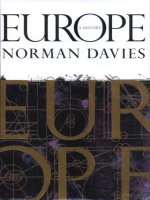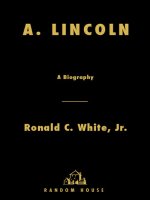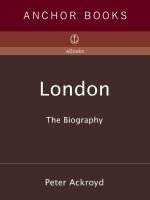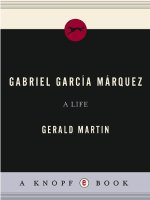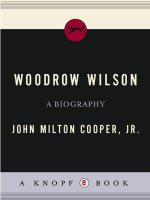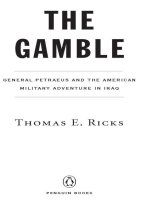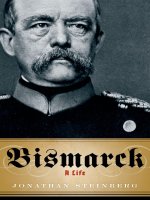Michael j braddick gods fury, englands fire a ars (v5 0)
Bạn đang xem bản rút gọn của tài liệu. Xem và tải ngay bản đầy đủ của tài liệu tại đây (7.61 MB, 691 trang )
God’s Fury, England’s Fire
MICHAEL BRADDICK
God’s Fury, England’s Fire
A New History of the English Civil Wars
ALLEN LANE
an imprint of
PENGUIN BOOKS
ALLEN LANE
Published by the Penguin Group
Penguin Books Ltd, 80 Strand, London WC2R 0RL, England
Penguin Group (USA) Inc., 375 Hudson Street, New York, New York 10014, USA
Penguin Group (Canada), 90 Eglinton Avenue East, Suite 700, Toronto, Ontario, Canada M4P 2Y3
(a division of Pearson Penguin Canada Inc.)
Penguin Ireland, 25 St Stephen’s Green, Dublin 2, Ireland
(a division of Penguin Books Ltd)
Penguin Group (Australia), 250 Camberwell Road, Camberwell, Victoria 3124, Australia
(a division of Pearson Australia Group Pty Ltd)
Penguin Books India Pvt Ltd, 11 Community Centre, Panchsheel Park, New Delhi – 110017, India
Penguin Group (NZ), 67 Apollo Drive, Rosedale, North Shore 0632, New Zealand
(a division of Pearson New Zealand Ltd)
Penguin Books (South Africa) (Pty) Ltd, 24 Sturdee Avenue, Rosebank, Johannesburg 2196, South
Africa
Penguin Books Ltd, Registered Offices: 80 Strand, London WC2R 0RL, England
www.penguin.com
First published 2008
1
Copyright © Michael Braddick, 2008
The moral right of the author has been asserted
All rights reserved
Without limiting the rights under copyright
reserved above, no part of this publication may be
reproduced, stored in or introduced into a retrieval system,
or transmitted, in any form or by any means (electronic, mechanical,
photocopying, recording or otherwise) without the prior
written permission of both the copyright owner and
the above publisher of this book
978-0-14-044757-6
For Karen, Cora and Melissa
Contents
List of Illustrations
Maps
Preface
The Crisis of the Three Kingdoms, 1637–1642
1 From the Bowels of the Whore of Babel
The Scottish Prayer Book Rebellion and the Politics of Reformation
2 Self-Government at the King’s Command
Politics and Society in Caroline England
3 Drawing Swords in the King’s Service
The English and the Bishops” Wars
4 We Dream Now of a Golden Age
The Long Parliament and the Public Sphere
5 Barbarous Catholics and Puritan Populists
The Irish Rising and the Politics of Fear
6 Paper Combats
The Battle for the Provinces
7 Raising Forces
The Slide into War
War, 1642–1646
8 Armed Negotiation
The Battle of Edgehill and Its Aftermath
9 Military Escalation, Loyalty and Honour
The English War Efforts in 1643
10 The War of the Three Kingdoms
The Irish Cessation and the Solemn League and Covenant, 1643
11 Marston Moor
The Victory of the Covenant?
12 A Man Not Famous But Notorious
Death and Its Meanings
13 Naseby and the End of the War
The Triumph of the New Model Army
14 Winners and Losers
The Costs and Benefits of Civil War
15 Remaking the Local Community
The Politics of Parishes at War
Revolution, 1646–1649
16 Post-War Politics
Print, Polemic and Mobilization
17 Military Defeat and Political Survival
Attempts at Settlement from Newcastle to Newmarket
18 The Army, the People and the Scots
Putney, the Engagement and the Vote of No Addresses
19 To Preserve That Which God Hath Manifestly Declared Against
Charles, the Scots and the Second Civil War
20 The Occasioner, Author, and Continuer of the Said Unnatural, Cruel and Bloody Wars
The Trial and Execution of Charles I
21 Epilogue
England’s Freedom
Acknowledgements
Picture Credits
Abbreviations
Note on Authorship and Dating of Pamphlets
Note on Dates and Quotations
Notes and References
Bibliography of Secondary Works
Index
List of Illustrations
1. Charles I leaving Oxford in disguise, April 1646. (Engraving, anon., 1648)
2. English soldiers reported to be embracing their Scottish adversaries rather than fighting them,
in 1640. (Engraving, anon., 1648)
3 and 4. Portraits of Charles I from the 1630s. (Oils, Sir Anthony Van Dyke, 1635, 1636)
5. The Prayer Book disturbances in Edinburgh in 1637. (Engraving, anon., 1648)
6. The Royal Exchange in 1644: a centre of trade, gossip and news. (Engraving, Wenceslaus
Hollar)
7. William Laud and Sir Thomas Wentworth (soon to become the Earl of Strafford). (Engraving,
William Faithorne, after Sir Anthony Van Dyke, early 1640s)
8. The House of Commons in the Short Parliament. (Engraving, English school, seventeenth
century)
9. The attack on Lambeth Palace, May 1640. (Engraving, anon., 1648)
10. English soldiers purging churches on their way north in 1640. (Engraving, anon., 1648)
11. Panoramic view of London in 1647. (Engraving, Wenceslaus Hollar)
12. New Palace Yard and Westminster Hall in 1647. (Engraving, Wenceslaus Hollar)
13. The execution of the Earl of Strafford in 1641. (Engraving, Wenceslaus Hollar, c. 1641)
14. Cheapside Cross, a focal point of civic life. (Engraving, anon., 1809: copy of earlier
engravings depicting the visit of Marie de Medici in 1638)
15. The dangers of sectarian excess: the Adamites. (Woodcut, anon., 1641)
16. The dressing from a plague sore delivered to John Pym on the floor of the House of
Commons. (Engraving, anon., 1642)
17. Wildly exaggerated reports of atrocities against Protestants in Ireland. (Engraving, anon.,
1647)
18 and 19. John Pym portrayed in the forefront of the battle against Popish conspiracies.
(Woodcuts, anon., 1641)
20. The triumphant return of Parliament men following the King’s departure from London in
January 1642. (Engraving, anon., 1642)
21. The ‘paper war’ in the summer of 1642: fundamental constitutional issues argued out before
a print audience. (Title page, anon., 1642)
22. A ‘gunpowder plot’ in Derbyshire in 1641, which was probably fictitious, despite the
assurances on the title page. (Title page, anon., 1641)
23. The battle for the provinces in 1642: declarations and resolutions of local bodies published
for the benefit of a national audience. (Title page, anon., 1642)
24. Royalist propaganda about the actions of the ‘Colchester plunderers’ and other
parliamentarian barbarities: a later compendium of Bruno Ryves’s Mercurius Rusticus.
(Engravings, anon., 1685)
25. The battle of Edgehill, October 1642. (Engraving, anon., 1648)
26. The destruction of Cheapside Cross, May 1643. (Engraving, anon., 1648)
27. Henrietta Maria charged with treason and royal houses purged of popery, May 1643.
(Engraving, anon., 1648)
28. The burning of the Book of Sports at the site of Cheapside Cross, May 1643. (Engraving,
anon., 1648)
29. The revelation of the Waller plot, June 1643. (Engraving, anon., 1643)
30. The execution of the plotters, June 1643. (Engraving, anon., 1643)
31. The Apologeticall Narration, which sparked fierce controversy in the parliamentary
alliance. (Title page, 1644)
32. John Milton’s Areopagitica argued against pre-publication censorship. (Title page, 1644)
33. The executions of William Laud, Sir John Hotham and his son, and Sir Alexander Carew in
January 1645. (Engraving, anon., 1648)
34. Political astrology: George Wharton’s notoriously inaccurate military predictions in May
1645. (Title page, 1645)
35. The battle of Naseby. (Engraving, anon., 1647)
36. One of the twenty-eight ‘works’ around London’s civil war fortifications. (Engraving, anon.,
1643)
37. The Queen’s Sconce, part of the civil war defences of Newark. (Aerial photograph, 1962)
3 8 . Times Whirligig, by a former clubman leader, satirizing Somerset’s new low-born
governors. (Title page, 1647)
39. Matthew Hopkins ‘watching’ two suspects during the witch hunt in 1645. (Woodcut, anon.,
1647)
40. Thomas Edwards’s Gangraena. (Title page, 1646)
41 and 42. Images of political monstrosity in post-war England. (Woodcuts, anon., 1647)
43. Sir Thomas Fairfax presiding over the Council of the Army in 1647. (Woodcut, anon., 1647)
44. Charles I in captivity at Carisbrooke Castle. (Woodcut, anon., 1648)
45 and 46. Plans for a new Whitehall Palace approved by Charles during his captivity at
Carisbrooke Castle. (Architectural drawings, John Webb)
47. The Scottish invasion, 1648. (Engraving, anon., 1648)
48. The siege of Colchester, 1648. (Engraving, anon., 1648?)
49. The trial of Charles I. (Engraving, English school, seventeenth century)
50. The execution of Charles I. (Engraving, anon., 1649)
51. The frontispiece of Eikon Basilike portraying Charles I, the royal martyr. (Engraving,
William Marshall, 1649)
52. The equestrian statue of Charles I at Charing Cross pictured soon after it was erected.
(Drawing, anon., c. 1700)
53. The Cromwell statue in Parliament Square pictured soon after it was erected. (Photograph,
York and Son, 1899/1900)
Maps
1. The military situation in late 1642
2. The military situation in late 1643
3. The military situation in late 1644
4. The military situation in late summer 1645
5. Principal battles in Ireland and Scotland
Preface
In late April 1646 Charles I, a monarch very jealous of his dignity and personal authority, slipped out
of Oxford disguised as a servant. A week later, after some apparently hesitant wanderings in the
company of his chaplain and one personal friend, he surrendered to a Scottish army camped at
Southwell, Nottinghamshire. Eight years earlier he had set out to crush religious protests in Scotland,
never quite able to see the protesters as anything but rebels. But their campaign had set off a political
and religious crisis that reverberated through all three of Charles’s kingdoms – Scotland, Ireland and
then England. Charles had been unable to establish military control in any of them and, following
defeat in England, surrender to his original tormentors had come to seem his best option.
Charles I leaving Oxford in disguise, April 1646
This personal humiliation signalled the end of one of the most destructive conflicts in English
history, in which a larger percentage of the population may have died than in the First World War,
and huge amounts of property had been destroyed. Armies had tramped the land, bringing in their
wake terrible plagues. The coming harvest was bad, the crops ruined by wet weather, and over the
next four years famine threatened. To many contemporaries these were unmistakable judgements of
God on a sinful land: war, disease and famine, three of the Horsemen of the Apocalypse. After four
years of war in England, however, there was still no agreement about which sins, specifically, were
being punished.
Three days after the surrender of the King a London bookseller called George Thomason bought a
tract, Gods Fury, Englands Fire , which promised the answer. Thomason, an avid (perhaps
obsessive) collector of pamphlets, had acquired around thirty tracts published during or dealing with
the events of that week. They were dominated by two issues: the surrender of the King and the chaos
of religious opinion that many now saw in England. With the King defeated, God’s judgement on the
battle of arms now clear, it did not take much imagination to identify religion as the issue which
should now be addressed. John Benbrigge, the author of Gods Fury, took as his text Isaiah xlii, 24-5:
Who gave Jacob for a spoil and Israel to the robbers? Did not the Lord? He against whom we have
sinned? For they would not walk in his ways, neither were they obedient to his Law. Therefore he
hath poured on him the fury of his anger, and the strength of battle, and it hath set him on fire round
about; yet he knew not; and it burned him, and he laid it not to heart.
The general relevance was clear, but what was it that English sinners should lay to heart? Benbrigge
promised to identify ‘those spiritual incendiaries which have set church and state on fire’ and
exhorted ‘all persons to join together in seeking to quench it’. He also promised to explain how to
‘prevent the fire from being unquenchable in our ruin’. Like many others he set out his partisan view
in a laboured and formalistic argument, based on scriptural authorities. His difficulty though was that
reasoning of this kind, and scriptural authority, could not convince doubters. In the lush world of civil
war print there were too many competing voices of reason, and divergent readings of scripture, to
clinch an argument this way. Other partisans could make a competing case in the same style, from
similar authorities, while some renounced scholarship and scripture altogether for these purposes.
Benbrigge had nothing to say on this deeper problem, and is now forgotten.1
Thomason eventually bought around 20,000 tracts between 1640 and 1660, a collection which
reveals another dimension of the crisis: the very wide publicity given to these fundamental political
disagreements. From the very beginning of the Scottish crisis partisans had distributed tracts,
mobilized petitions, organized demonstrations and, eventually, raised armies. Benbrigge was by no
means the most obscure figure to be given a public voice as a result – leathersellers preached, women
spoke of their visions to senior army commanders, men of pre-eminent obscurity purged churches of
scandalous ministers and offensive images. Here was a challenge to the cultural authority not just of
scripture and reason, but also of kings, bishops and gentlemen, of courts and institutions of
government, of learning and universities. Contemporaries had no shortage of languages in which to
describe the resulting chaos or to express anxiety: Thomason’s collection is full of discussions of
portents and wonders, and of the principles which, if agreed, might bring an end to fighting. But there
were no such terms. As long as people like Benbrigge offered different versions of the nature of the
problem, to a wide public and without finding new grounds on which to convince people, there
remained a chaos of highly principled and competing certainties.
In one sense this was a crisis in Reformation politics – over the nature of the true religion, how to
decide what that was, and of the proper relationship between religious and secular authority. In
Scotland a religious party, the Covenanters, took control of the discontents, mobilizing pretty much
the whole kingdom around a manifesto for a new settlement. They created a radical movement but one
that had clear goals and, therefore, clear limits. The combination of a unified Scottish church and a
revolutionary constitution gave control to identifiable political leaders: it was a revolution defined in
theory and practice by Reformation politics. In Ireland, Catholic elites excluded from power on the
basis of their religion took advantage of the crisis, seeking to recover their position by appealing to
their king, in opposition to his English parliament and the Protestant political establishment. In the
process they unleashed a popular revolt against Protestant settlement. Armies from Scotland and
England were sent to defend the Protestant interest and Ireland eventually suffered the greatest
devastation: a bloody, sectional conflict whose memory and relevance live on.
England’s experience of this crisis was more hesitant, anxious and divided than Scotland’s; but
also more radical in its outcomes. And unlike Ireland the conflict was for most people an argument
within a single church and state, about its true identity, past and future; it never quite became a war
between rival confessions. Almost everyone was against popery (although they could not necessarily
agree what it was) and the bitterest public recriminations about religious belief were often within the
parliamentary coalition. England, the metropolitan kingdom, was the cockpit of the British crisis, its
armies and battles the largest, its presses by far the most active, its public discussion completely
open-ended and almost without social restriction.
This conflict over religion had profound political implications: Sir John Eliot, for example, thought
‘religion it is that keeps the subject in obedience… [it is] the common obligation among men; the tie
of all friendship and society; the bond of all office and relation; writing every duty into the
conscience, the strictest of all laws’.2 Confronted by the demands of the Covenanters, Charles had
said that to concede would reduce him to the condition of the ‘Duke of Venice’: refusing to concede,
it subsequently turned out, had reduced him much further. Criticisms of his rule implicitly raised
fundamental questions not only about him, but about kingship, the normal form of government in
seventeenth-century Europe (aside from city republics such as Venice that made do with a Doge).
Over the coming decade the effort to make Charles see a different sense failed, and it became
increasingly difficult to avoid asking what to do with a king who was unfit to rule, or to deal with.
Fundamentally, that was a question about monarchy: a king governed by his subjects, or chosen by
them, was a peculiar kind of king, perhaps no king at all; but a king who stubbornly led his people
into religious error and civil war could hardly be said to be doing God’s work, which was surely the
purpose of kings.
Three years after his surrender to the Scots, Charles chose martyrdom to an ideal of the Anglican
church and sacred monarchy rather than a deal with his English subjects. A powerful minority among
his subjects, supported by the army, chose to execute him and establish a kingless government, rather
than try any longer to get a deal from him. Fired both by a Reformation certainty (that God had called
them to take charge of the commonwealth) and by an idea more associated with the Enlightenment
(that the purpose of government was the good of the people, and should be answerable to their
representative), these militants put their king on trial, then abolished the monarchy and the House of
Lords. Like many modern revolutionaries they made this a year zero: according to their supporters
this was the first year of England’s freedom.
Out of a chaos of opinion and anxiety, and of the catastrophe and trauma of civil war, had come
ideas about freedom and citizenship, religious toleration and the exclusion of secular power from
matters of conscience. These arguments had deeper roots in the English past but were newly public,
and newly in power. These English discussions about the origins and limits of political power were
of profound significance for Enlightenment Europe – indeed, to the more celebrated revolutions in
eighteenth-century America and France. But they were not, as far as we know, representative of
average opinions: others sought resolutions to the crisis in astrology, the prosecution of witches, or
the restoration of older forms of religious and political authority. Neither did this minority remain
united, or command political power for very long – in 1660 a monarch was restored who indulged
freely in the practice of touching for the King’s Evil, curing a tubercular disease by virtue of his
divinely sanctioned power. In that sense the revolution was of limited significance, and civil peace
might have been established on other terms sooner than 1660.
It is conventional to tell that constitutional story – of a republican failure ending in restoration – but
to do so is to limit the significance of the 1640s to that single constitutional question. There is much
more to say, and to remember, about England’s decade of civil war and revolution. Political and
religious questions of fundamental importance were thrashed out before broad political audiences as
activists and opportunists sought to mobilize support for their proposals. The resulting mass of
contemporary argument is alluring to the historian since it lays bare the presumptions of a society
very alien to our own. At the same time, by exposing those presumptions to sustained critical
examination, this public discussion changed them. This was a decade of intense debate and
spectacular intellectual creativity – not just in politics and religion, but in understandings of the
natural world and in how political opinion was mobilized. The implications of this English
experience reverberated around the world of the Enlightenment and English politics were
permanently changed by the experience of popular mobilization: much more was at stake than the fate
of Charles I and hence the restoration of his son did not settle the arguments, or erase the memory of
what had been said.
England’s civil wars were components of a larger crisis, of all three Stuart kingdoms. Nonetheless,
although English experience cannot be understood outside that British context, this is a book about the
distinctive English experience of that shared crisis. England was the last of Charles’s kingdoms to
rebel, and the one with the most spontaneous royalist party, but also the one with the most radical and
creative politics. Part of the resolution of that apparent paradox is to study the conditions which made
this extraordinary creativity possible. Crucial among them was the appeal to ordinary people, often
those without a vote, to support particular platforms, and the creative dialogue between activists,
opportunists and their wider publics. In this fluid and confused political world public support was
courted, opinions were mobilized and, in the name of the people, a revolution was carried out. My
aim here is to understand that political process in England, to capture the anxiety and trauma of civil
war, the plurality of responses and the creative confusion to which it gave rise. To say that God’s fury
had caused England’s fire was in these circumstances to start an argument rather than end one.
Therein lay the crisis of Reformation politics.
The Crisis of the Three Kingdoms, 1637–1642
1
From the Bowels of the Whore of Babel
The Scottish Prayer Book Rebellion and the Politics of Reformation
It was more like a procession than an invasion. When a large Scottish army passed through Flodden in
1640, their progress was ‘very solemn and sad much after the heavy form showed in funerals’.
Trumpeters decked with mourning ribbons led the way, followed by one hundred ministers and, in
their midst, the Bible ‘covered with a mourning cover’. Behind the ministers came old men with
petitions in their hands along with the military commanders, also wearing black ribbons or ‘some sign
of mourning’. Finally came the soldiers, trailing pikes tied with black ribbons, accompanied by
drummers ‘beating a sad march such as they say is used in the funerals of officers of war’.1
This was a forceful demonstration about the death of the Bible, a complaint about the fate of the
true, scriptural religion in Scotland. The origin of their protest was revulsion at a new Prayer Book,
introduced in 1637 and described by the Earl of Montrose as ‘brood of the bowels of the whore of
Babel’. ‘[T]he life of the gospel [had been] stolen away by enforcing on the kirk a dead service
book’, he said.2 Here was its funeral. In fact the army was not, strictly speaking, the army of the Scots
but of the Covenanters, men who had entered a mutual bond before God to defend the true religion.
Even at this stage there were Scots who were not Covenanters, and that distinction was to become
extremely significant in the coming years – Montrose, for one, was later to abandon this version of the
cause and become the champion of armed royalism in Scotland.
This was not the first time that a Scottish army had taken this road, inland from the fortified town of
Berwick and crossing the river Tweed, which marks the border between England and Scotland at its
eastern end, just south of Coldstream. The last time, in 1513, it had ended in disaster: perhaps 5,000
Scots died, among them the Scottish king, eleven earls, fifteen lords, three bishops and much of the
rest of Scotland’s governing class. 3 Fear of the arrival of armed Scots in the north had caused
centuries of concern in England. Indeed tenants in the Borders had enjoyed unusual freedoms in return
for an obligation to offer armed resistance to Scottish incursions, and the prevalence of cross-border
cattle raiding had given rise to something like clan society. When James VI of Scotland ascended to
the English throne in 1603, the Borders had, in his vision, become middle shires, and the problems
had receded somewhat. Nonetheless, armed Scots were not regarded with equanimity in northern
England.4
This time, however, they were barely opposed and the march past Flodden was the prelude to a
successful occupation of northern England, achieved more or less without a fight. Alexander Leslie’s
Covenanting army were faced by 10,000 English troops with more in reserve further south. But this
